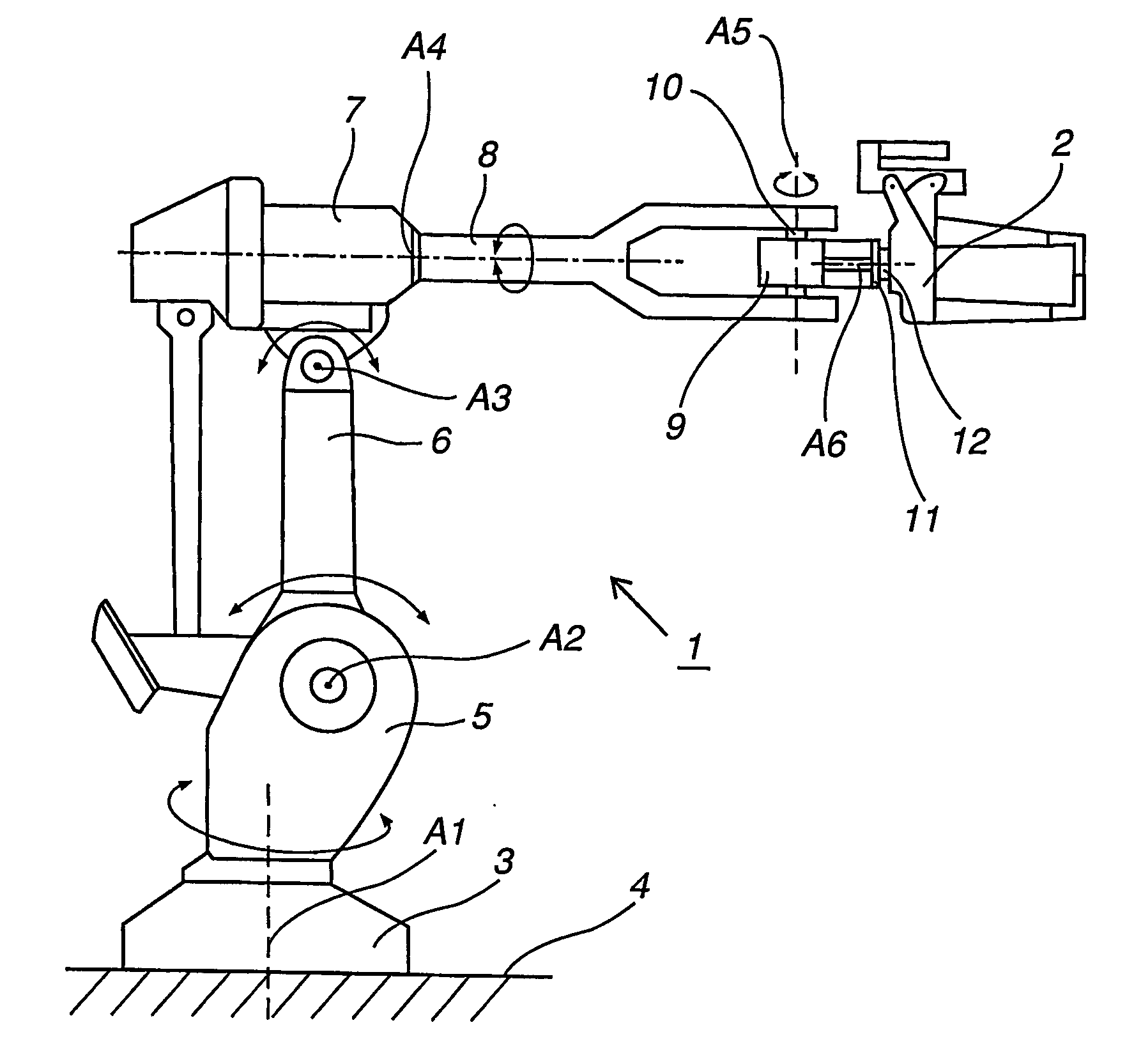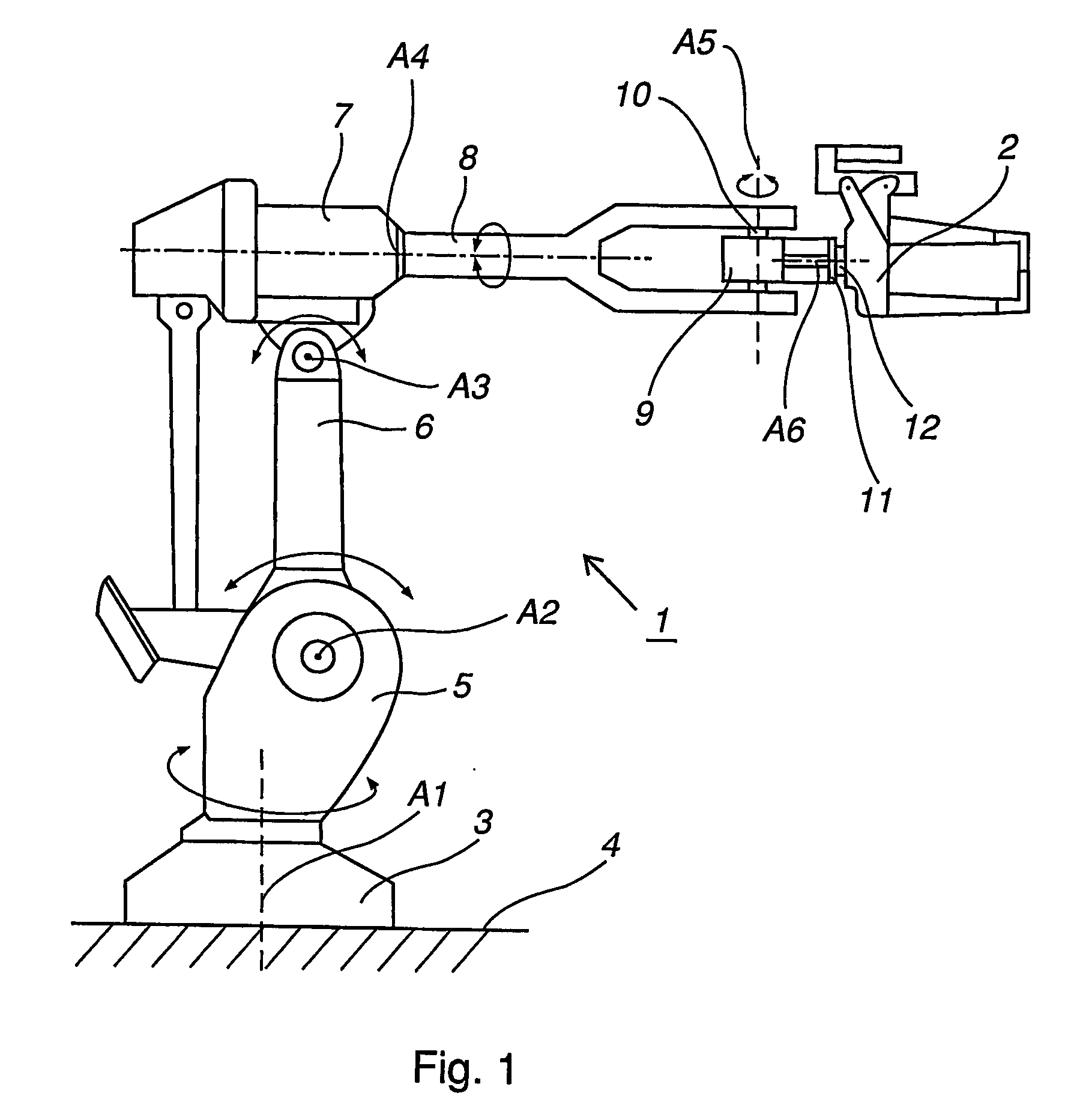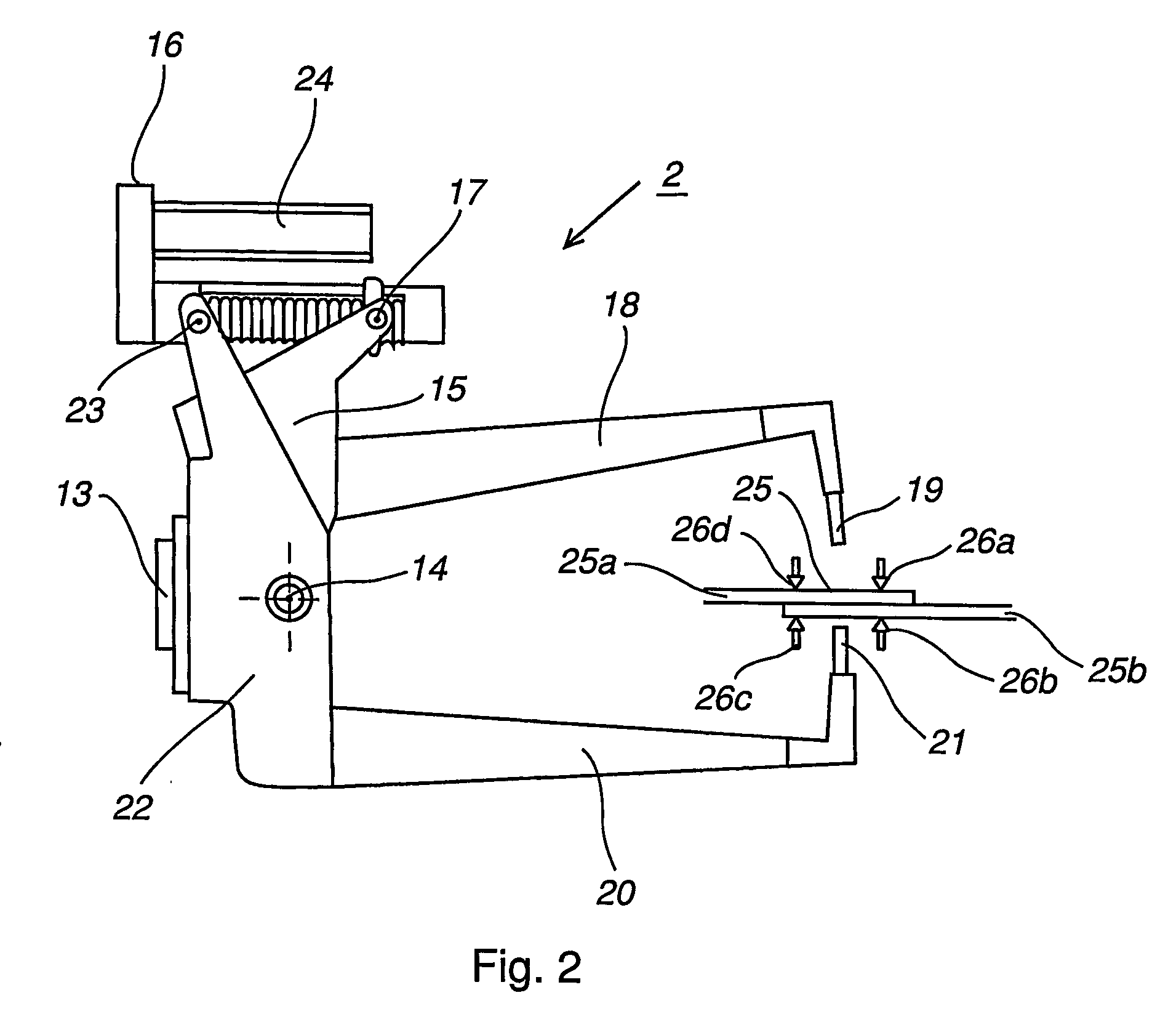Method for positioning a welding robot tool
a welding robot and tool technology, applied in the direction of electrical programme control, instruments, program control, etc., can solve the problems of inaccurate positioning of sheets, deterioration of surface quality of finished products, and sheet deformation, so as to reduce operating costs, improve balancing, and reduce investment
- Summary
- Abstract
- Description
- Claims
- Application Information
AI Technical Summary
Benefits of technology
Problems solved by technology
Method used
Image
Examples
Embodiment Construction
[0030] The following description relates both to the method and to the device.
[0031]FIG. 1 shows an example of a prior art industrial robot 1 comprising a tool, a so-called welding gun 2. The industrial robot comprises a foot 3 that is mounted to a base 4. The foot 3 supports a stand 5, which is rotatably arranged in relation to the foot 3 about a first axis A1. The stand 5 supports a first robot arm 6, which is rotatable in relation to the stand 5 about a second axis A2. The first robot arm supports an arm housing 7, which is rotatable in relation to the first robot arm 5 about a third axis A3. The arm housing 7 supports a second robot arm 8, which is rotatable in relation to the arm housing 7 about a fourth axis A4, and where the fourth axis A4 coincides with the longitudinal axis of the second robot arm 8. The second robot arm 8 comprises a wrist housing 9, which is supported by a wrist 10. The wrist housing 9 is rotatable about a fifth axis A5 which coincides with the longitudi...
PUM
| Property | Measurement | Unit |
|---|---|---|
| Current | aaaaa | aaaaa |
| Distance | aaaaa | aaaaa |
Abstract
Description
Claims
Application Information
 Login to View More
Login to View More - R&D Engineer
- R&D Manager
- IP Professional
- Industry Leading Data Capabilities
- Powerful AI technology
- Patent DNA Extraction
Browse by: Latest US Patents, China's latest patents, Technical Efficacy Thesaurus, Application Domain, Technology Topic, Popular Technical Reports.
© 2024 PatSnap. All rights reserved.Legal|Privacy policy|Modern Slavery Act Transparency Statement|Sitemap|About US| Contact US: help@patsnap.com










